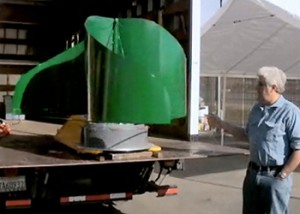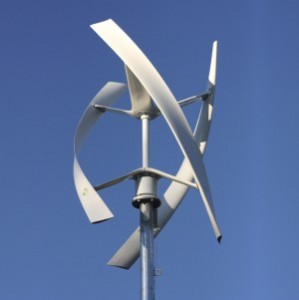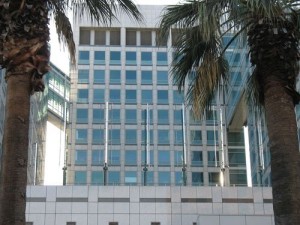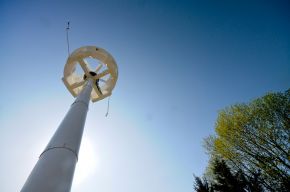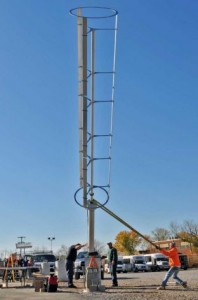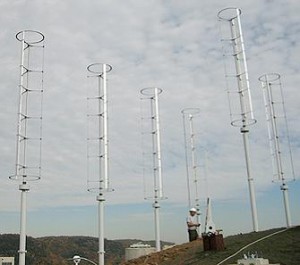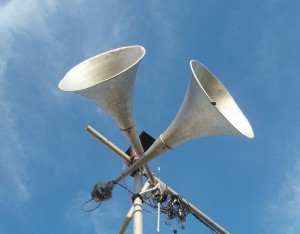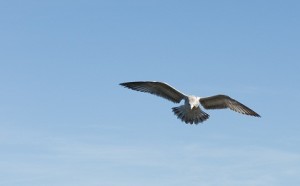Vertical Axis Wind Turbine designs have changed gradually over the centuries. Let’s take a look at the general features all VAWTs have in common and then dive into the different types of VAWT designs.
All VAWT designs have two things in common. The first is that they all generate electricity with the power of the wind. The second is that they do it with the help of a vertically-arranged primary rotor shaft. This means the turbine does not need to face into the wind in the way that a horizontal-axis wind turbine (HAWT) would need to. The downside of this is that VAWTs often have a higher torque than that of a HAWT, as well as a more expensive drivetrain.
The upside? VAWTs can be arranged closer together than HAWTs. This is particularly useful in the city where there is usually not as much wind or available space at your disposal as in an open rural area. When engineers design VAWTs they are able to create models with gearboxes that are close to or on the ground. This makes it easy to maintain.
Of the different types of VAWTs, there are a several worth mentioning. Let’s take a look at some types of Darrieus and Savonius wind turbines.
Darrieus Wind Turbine Design
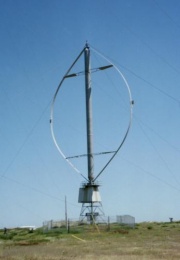 The Darrieus wind turbine is a VAWT that was patented in the early 20th century by Georges Jean Marie Darrieus. This turbine uses spinning airfoils (also known as blades or sails), which use lift force to capture wind power. This type of turbine is often unable to start by itself, so for some models it is necessary to include a starter in the design. Darrieus wind turbines have been known to have issues with pulsing rotation speeds, which can result in extra wear and tear on the turbine. As a precaution, many variants of Darrieus wind turbines include a mechanical speed control or a break to decrease rate at which the turbine breaks down. Use of helical airfoils is also useful for lessening strain on the device.
The Darrieus wind turbine is a VAWT that was patented in the early 20th century by Georges Jean Marie Darrieus. This turbine uses spinning airfoils (also known as blades or sails), which use lift force to capture wind power. This type of turbine is often unable to start by itself, so for some models it is necessary to include a starter in the design. Darrieus wind turbines have been known to have issues with pulsing rotation speeds, which can result in extra wear and tear on the turbine. As a precaution, many variants of Darrieus wind turbines include a mechanical speed control or a break to decrease rate at which the turbine breaks down. Use of helical airfoils is also useful for lessening strain on the device.
Giromills and cycloturbines are two kinds of common Darrieus wind turbines. Because giromills exclusively make use of lift power (which is used for accelerating motion), they require a motor to get the motion started. Cycloturbines do not need a motor to start; instead they are designed to include a vane that sets the generator at an optimal angle to get started with drag power. Once it gets going, it uses lift power to accelerate in the same way as a giromill. These types of wind turbines are great for areas where the wind can be extra gusty and temperamental.
Savonius Wind Turbine Design
 Savonius wind turbines are a creation that also officially came to fruition in the early 20th century (shortly before the Darrieus wind turbines). They were invented by a man named Sigurd Johannes Savonius. Most Savonius turbines do not require a motor starter. Their airfoils are in the shape of scoops, which catch the wind to move the turbine with drag power.
Savonius wind turbines are a creation that also officially came to fruition in the early 20th century (shortly before the Darrieus wind turbines). They were invented by a man named Sigurd Johannes Savonius. Most Savonius turbines do not require a motor starter. Their airfoils are in the shape of scoops, which catch the wind to move the turbine with drag power.
Unfortunately drag power does not collect as much of the wind’s energy as lift power does, but Savonius wind turbines are generally much less expensive than other types of wind turbines and they are quite reliable. These types of turbines are nice for use in the city.

